Episode Preview
Introduction
Imagine this: It’s a quiet evening, and Sam—a passionate storyteller with a love for deep, reflective conversations—finds himself endlessly scrolling through his phone. Once brimming with creative ideas, Sam now feels his thoughts are slipping away into a haze of endless notifications and trivial memes. One night, as he stared at the flickering screen, a sudden realization hit him: his mind was no longer a sanctuary of rich ideas, but a battleground of scattered images and fleeting information. This, my friends, is what we call Brain Rot.
In today’s episode, we’re diving headfirst into the phenomenon of brain rot. We’ll explore:
- Understanding Brain Rot: What is it really, and how did we get here?
- The Societal Impact: How is this digital overload shaping our collective mindset?
- Cultural Reflections: How is brain rot mirrored in our art, media, and daily interactions?
- A Digital Detox Journey: A real-life case study of reclaiming one’s focus.
- Strategies to Combat Brain Rot: Practical tips to protect and rejuvenate your mind.
We’ll answer burning questions like: What exactly is happening in our brains when we get lost in the digital maze? How does this affect our creativity and relationships? And most importantly, what steps can we take to fight back?
And don’t forget—after these five core sections, we’ll move into our signature Learn Vocabulary in Context and Discussion Questions segments to help you not only grasp these ideas but also express them in English with confidence.
Get ready, because this episode is about to challenge the way you think about your digital life and empower you with the tools to reclaim your focus and creativity.
Understanding Brain Rot
Welcome back, everyone. In this segment, we’re going to dive deep into the heart of our digital dilemma—what we call “brain rot.” Now, don’t worry; I’m not here to scare you into abandoning your phone. Instead, we’re going to explore what brain rot really means, where it comes from, and how it subtly shifts the way we think and interact with the world. So, let’s get started.
Imagine your brain as a well-organized library. For years, it was a sanctuary of rich, meticulously cataloged knowledge. Every book, every idea had its rightful place on the shelf. But then, with the digital revolution sweeping in, imagine if someone started scattering those books all over the floor. That’s a bit like what happens when we bombard our minds with endless streams of notifications, tweets, and random snippets of information. Instead of diving deep into one story, we’re now flitting from one headline to the next. This is the essence of brain rot: the gradual erosion of our ability to process and retain information in a meaningful way due to constant digital distractions.
Now, let’s pause for a moment and ask ourselves: Have you ever noticed that it’s getting harder to focus on a single task, no matter how much you want to? Think about those evenings when you set out to read a chapter of a book, only to find yourself scrolling through social media or clicking on video after video. What is it about our digital lives that makes it so challenging to settle into deep, uninterrupted thought? Stay with me, because by the end of this section, we’ll circle back and answer that very question.
So, where did this all begin? The rise of the internet and mobile technology has transformed the way we interact with information. In the past, our interactions with media were deliberate—reading a book, watching a movie, or engaging in a long conversation. Today, we’re constantly connected, always plugged in, and our devices are designed to capture and hold our attention. Every buzz, ping, or flash of a notification is engineered to pull us back into the digital realm. And while these innovations have made life more convenient in many ways, they’ve also led to a condition where our minds are overloaded with too much, too quickly.
Let’s talk a bit about the science behind it. Our brains are incredibly adaptable; they’re built on a principle called neuroplasticity, which means they’re constantly rewiring themselves in response to new experiences and information. This is fantastic when you’re learning a new skill or absorbing important knowledge. However, there’s a catch: neuroplasticity also means that our brains adapt to the patterns we feed them. When we habitually jump from one digital snippet to another, we start training our brains for short bursts of attention rather than sustained focus. Over time, this can lead to what we describe as “brain rot”—a state where the brain’s capacity for deep, concentrated thought is compromised.
Think about your daily routine. How often do you find yourself checking your phone, even when you know you have a task at hand? How many times have you caught yourself drifting into a sea of online distractions when you really should be concentrating? This isn’t just about poor self-control; it’s a symptom of a larger shift in how our brains are processing information. We’re moving from a mode of deep, reflective thinking to one of rapid-fire consumption and surface-level engagement.
I want you to picture this: You’re working on a challenging project, and every time you glance at your phone, your focus is pulled in a different direction. It’s like trying to write a long essay while someone keeps flicking the pages of your notebook. The constant interruptions don’t just slow you down—they change the way you think. Your brain begins to crave that quick, easy dopamine hit from a new notification rather than the slow satisfaction of deep thought. And over time, this can reshape your cognitive habits in ways that make sustained concentration more and more difficult.
I want you to take a moment—yes, right now—to reflect on your own habits. When was the last time you truly disconnected? How did it feel? Did you notice a difference in your ability to think deeply or solve a problem without interruption? These are not just idle musings; they’re the very essence of what we’re discussing. Your experiences are valid, and they’re a window into the broader phenomenon of brain rot that we’re trying to understand today.
As we unravel this concept, we must acknowledge that the term “brain rot” is a bit of a colloquialism—a metaphor, really. It’s not that our brains are literally decaying like old fruit; rather, the term captures the gradual erosion of our cognitive abilities when we are bombarded with too much superficial information. Imagine a garden that’s been overtaken by weeds. The nutrients that once nurtured vibrant, deep-rooted plants are now being sapped away by invasive species. Similarly, our cognitive resources are being diverted from deep, meaningful processing to a scattered, fragmented mode of thinking.
Here’s where the puzzle deepens. With so much on offer at our fingertips—news, social media, streaming content—how did we end up in a situation where it feels almost impossible to switch off and engage in more deliberate thought? What exactly is happening in our brains when we fall prey to endless scrolling and digital distractions? I know I’ve posed this question before, and I’m asking you to hold onto it. We’re about to get into the nitty-gritty of the science behind our digital habits, so stick around, because the answer is both fascinating and a little alarming.
Research has shown that when we engage in rapid, superficial browsing, our brain’s reward centers light up, releasing a surge of dopamine—the same chemical associated with pleasure and reinforcement. This creates a feedback loop: the more we engage in this behavior, the more our brain craves it, much like an addict craves their next fix. And because these digital interactions are so fleeting, they don’t offer the sustained gratification that comes from deeper, more meaningful cognitive work. Instead, we’re left with a sense of emptiness, as if we’ve consumed a lot but truly absorbed very little.
Let’s break that down a bit further. Imagine you’re eating a meal, but every few minutes, someone pulls the plate away and replaces it with a tiny morsel of food. No matter how many morsels you receive, you never feel truly satisfied. That’s what happens in our brains when we’re constantly shifting our focus from one piece of information to another. We’re never allowed to savor the full experience of learning or reflection, and over time, this can lead to a kind of cognitive fatigue—a state where deep thinking feels almost too much effort.
So, to circle back to the question I posed earlier: What exactly is happening in our brains when we get caught up in the endless digital barrage? The answer lies in the interplay between our brain’s natural wiring and the modern demands placed upon it. Our cognitive systems are being forced to operate in a constant state of alert, jumping from one stimulus to the next. This not only diminishes our capacity for sustained attention but also reshapes our neural pathways, favoring speed and superficiality over depth and nuance. In essence, our brains are being rewired to function in a way that, while efficient for processing vast amounts of information quickly, undermines our ability to think deeply and creatively.
There you have it. By understanding brain rot, we start to see how the digital age is influencing our mental habits. It’s not about blaming technology—it’s about recognizing a shift that’s happening in all of us. And now that we’ve unpacked the fundamentals, I invite you to consider your own digital habits. Are you ready to take control of your focus, or will you let the constant hum of notifications dictate the pace of your life?
Keep these thoughts in mind as we move forward, because our journey to reclaiming our cognitive space is just beginning. In the next segment, we’ll explore the societal impact of this phenomenon—how our collective shift in thinking is influencing everything from our conversations to our communities. But for now, let’s reflect on the transformative power of our own minds and the ways we can protect them in an age of distraction.
The Societal Impact
Welcome back, everyone. In this part of our journey, we’re zooming out to see how brain rot doesn’t just affect our individual minds—it’s reshaping our entire society. Let’s picture a town called Maple Grove. Maple Grove used to be a place where neighbors gathered on porches to share long, heartfelt stories, and community meetings were full of lively debates and thoughtful exchanges. Fast forward to today, and that same town is now buzzing with the constant ping of smartphones. People pass each other on the street, heads down, lost in the digital stream of trending topics and bite-sized news. It’s as if the very fabric of genuine conversation has been replaced by rapid-fire updates and shallow soundbites.
Now, I want you to imagine your own community for a moment. Think about how you interact with friends, family, and even strangers. Have you noticed that these interactions sometimes feel less like meaningful exchanges and more like fleeting bursts of information? How often do you find yourself scrolling through endless updates, rather than engaging in face-to-face conversations? Stay with me, because by the end of this segment, we’re going to circle back and unpack just how these changes are altering the way we communicate.
The shift in Maple Grove is more than just a quirky local story—it mirrors a broader trend across our modern society. With the rise of social media, we’ve seen a transformation in how news is shared, how opinions are formed, and even how we make decisions. The constant drive to be “in the know” has created an environment where deep, reflective thought is often sacrificed for the sake of staying current. It’s a bit like trying to eat a gourmet meal one bite at a time, never giving your palate the chance to savor the flavors.
Consider the phenomenon of echo chambers—places where people are surrounded by voices that confirm their existing beliefs. In the digital realm, these echo chambers are created by algorithms that feed us information similar to what we’ve already seen or liked. While this might seem comforting at first, it also means that we’re missing out on the diversity of thought that can spark creativity, challenge our perspectives, and ultimately lead to a richer understanding of the world. In Maple Grove, residents who once exchanged a variety of ideas now find themselves nodding along to the same trending opinions, often without even realizing it.
This brings us to a critical question: How has the pressure to stay constantly updated affected your daily interactions and thinking? Keep that question in your mind as we dive deeper, because we’re about to explore the social consequences of our digital habits.
One of the most noticeable effects of this digital shift is the fragmentation of our attention. In Maple Grove, community events that used to be a cornerstone of local culture now struggle to capture attention because people are too busy checking their feeds. Conversations at the local diner are peppered with interruptions—one moment someone is sharing a personal story, and the next, a notification buzzes on their phone. This constant interruption not only diminishes the quality of our interactions but also makes it harder for us to build strong, meaningful relationships. When we’re always looking at our screens, we lose the subtle cues of body language, tone, and context that are essential for truly connecting with others.
Moreover, the societal impact extends into our public discourse. Consider the way political debates are now conducted online. Instead of engaging in well-reasoned arguments, many discussions have devolved into rapid exchanges of soundbites and memes. This shift has serious implications. When nuanced debates are reduced to simple, emotionally charged posts, it becomes difficult to address complex issues with the depth they deserve. The pressure to keep up with an endless stream of information means that our attention spans are shorter, and our capacity for critical thinking can be compromised. In effect, the very process of democratic engagement is at risk.
Now, let’s bring in another layer: the effect on our mental well-being. With constant exposure to a barrage of digital content, many people in Maple Grove—and indeed, around the world—experience a sense of overwhelm and anxiety. The relentless flow of information can leave us feeling like we’re never truly caught up, always one step behind the latest news or trend. This anxiety can erode our self-esteem and lead to a persistent feeling of inadequacy, as we compare our everyday lives to the highlight reels we see online.
At this point, I’d like to invite you to take a moment. Pause whatever you’re doing and reflect on your own interactions. How many times in the past week have you felt distracted or disconnected because you were constantly checking your phone? Have you noticed that you sometimes struggle to engage in a conversation because your mind is already wandering back to a notification or a trending topic? Your personal experience is a vital piece of this puzzle, and by reflecting on it, you’re actively participating in this conversation about the societal impact of brain rot.
Let’s also consider how this shift has impacted our creativity and problem-solving skills. In the past, long walks, deep conversations, or even moments of solitude were often the breeding grounds for innovative ideas and thoughtful insights. Today, however, those moments are frequently interrupted by the lure of instant information. The brain, now accustomed to rapid stimulation, finds it increasingly challenging to settle into a state of deep thought. This means that our ability to engage in sustained, creative problem-solving is being compromised. The vibrant, diverse tapestry of ideas that once defined communities like Maple Grove is being replaced by a monotony of superficial interactions.
Before we wrap up this segment, let’s revisit the critical question we posed earlier: How has the pressure to stay constantly updated affected your daily interactions and thinking? The answer, as we’ve seen through the story of Maple Grove and the broader trends at play, is multifaceted. The drive to remain connected and constantly informed has led to fragmented attention, diluted conversations, and even a decline in our capacity for deep, critical thinking. It’s not just about missing out on meaningful interactions; it’s about fundamentally altering the way our brains process information and engage with the world.
In summary, the societal impact of brain rot is profound. It’s changing the way communities interact, the nature of public discourse, and even the very way we think and feel. Our digital lives, with their promise of constant connectivity, come at a cost—a cost that we must acknowledge and address if we are to preserve the rich, thoughtful exchanges that are the bedrock of a healthy society.
So, as you go about your day, I challenge you to take a step back and consider your own habits. Ask yourself: Are you allowing the relentless pace of digital updates to dictate the quality of your interactions? Can you find moments of genuine connection amid the noise? The answers to these questions are not only important for your own well-being but are also essential for the future of our society as a whole.
By understanding the societal impact of our digital habits, we can start to reclaim those precious moments of depth and connection. And remember, this isn’t about vilifying technology; it’s about finding a balance that allows us to harness its benefits without sacrificing the richness of human interaction.
Stay tuned, because in our next segment, we’re going to dive into the cultural reflections of brain rot—how our art, media, and cultural expressions are both shaping and reflecting these changes. But for now, think about the question we asked: How has the pressure to stay constantly updated affected your daily interactions and thinking? Reflect on your experiences, and consider what steps you might take to foster deeper, more meaningful connections in your life.
Cultural Reflections
Welcome back, everyone. In this segment, we’re turning our attention to how brain rot isn’t just an individual or societal challenge—it’s also being reflected, and sometimes even critiqued, in our art, media, and culture. Today, we’re going to explore how creative expressions—from films and literature to music and visual art—mirror the tension between our desire for depth and the pull of constant digital distraction.
Let’s start by imagining a filmmaker named Jordan. Jordan grew up in an era where storytelling was a sacred craft—a way to capture the beauty and complexity of human life. As a young artist, Jordan would spend countless hours in solitude, scribbling ideas in a worn notebook, dreaming of crafting narratives that would make people pause and think. But as the digital revolution swept through every corner of society, Jordan noticed a shift. The stories that resonated with audiences were changing. They were shorter, flashier, and often built around quick, digestible moments rather than long, reflective journeys. In Jordan’s latest film, the narrative unfolds in rapid cuts, interspersed with social media feeds and digital glitches—a visual metaphor for our increasingly fragmented attention spans.
Now, I want you to consider this: What is the true role of art and culture in helping us navigate a world dominated by digital distractions? Hold onto that thought, because as we delve deeper into this topic, we’ll come back to this question and unpack its meaning together.
The phenomenon of brain rot is not just a clinical or scientific concept—it has seeped into the very fabric of our cultural expressions. Think about modern literature, for example. In recent years, we’ve seen an explosion of flash fiction and micro-stories. While brevity can be a powerful tool, it sometimes feels as if these forms mirror the rapid-fire consumption of information we experience online. The challenge for writers today is not only to tell a compelling story but to capture the essence of an idea in a matter of seconds, much like a tweet or a headline. This shift in narrative style reflects a broader cultural change: our attention is becoming a commodity, and depth is often sacrificed for immediacy.
Music, too, offers a striking reflection of this trend. Many contemporary songs are designed with catchy hooks and repetitive beats—an auditory equivalent of scrolling through an endless feed of content. While there’s nothing inherently wrong with a catchy tune, when every piece of music is engineered to deliver that immediate dopamine hit, where does that leave room for the kind of reflective, soul-searching compositions that once defined entire genres? It’s as if our collective musical taste is being subtly reshaped to prioritize the instantaneous over the introspective.
Visual art has not been immune to these shifts either. Look at the rise of digital art and memes, which are both products of our digital age. On one hand, digital art has democratized creativity, allowing artists to share their work instantly and reach global audiences. On the other hand, the meme culture that has emerged is a double-edged sword—it’s brilliant in its ability to capture the zeitgeist with humor and brevity, yet it also often reduces complex ideas to oversimplified images that are quickly consumed and just as quickly forgotten.
I invite you to pause for a moment and think about the art or media that has impacted you recently. Was it a thought-provoking film, a moving piece of music, or perhaps a digital artwork that made you stop scrolling? Reflect on how these creative works influenced your mood or perspective. Your experience is a vital part of this conversation, and by engaging with it, you’re already taking part in the cultural dialogue about brain rot.
Now, let’s shift our focus to the role of social media in shaping cultural narratives. Social media platforms are powerful curators of culture, and they often dictate what is celebrated and what is forgotten. Trending hashtags and viral challenges can propel a simple idea to global prominence in a matter of hours. However, this rapid circulation of content can sometimes lead to a superficial understanding of complex issues. For instance, when a serious societal challenge is reduced to a catchy slogan or a meme, the depth of the issue is lost, leaving us with a surface-level engagement that rarely leads to lasting change.
Consider the work of a contemporary novelist who uses multiple narrative threads to capture the chaos of modern life. In one of their most recent novels, the story follows several characters, each struggling with their own digital demons—be it the compulsive need to check notifications or the overwhelming pressure to curate a perfect online persona. Through interwoven narratives, the author paints a vivid picture of how digital overload is not only fragmenting individual lives but also reshaping cultural values. The novel doesn’t offer a simple solution; instead, it invites readers to wrestle with the ambiguities of modern existence, much like the complexities of the digital landscape itself.
I also want to highlight a fascinating trend: the emergence of art installations that challenge our perceptions of reality and digital distraction. Some contemporary artists are creating immersive experiences where visitors are invited to disconnect from their devices and engage with the art in real time. In one notable installation, participants were given the chance to step into a room filled with analog objects—books, paintings, and even handwritten letters—contrasting sharply with the high-definition screens they’re used to. The experience was designed to remind visitors of the tactile, emotional richness that often gets lost in our digital lives. As you listen, I encourage you to think about your own experiences: Have you ever attended an event or visited a space that encouraged you to put your phone down and reconnect with the physical world?
The interplay between digital overload and cultural expression is a complex dance. On one hand, technology has given rise to new forms of creativity and unprecedented access to information. On the other hand, the very tools that empower us to create are also contributing to a kind of cultural dilution—a phenomenon that many refer to as brain rot. When our creative outputs are constantly tailored to capture fleeting attention, what does that mean for the future of art? Will we lose the ability to create works that demand patience, introspection, and emotional investment?
Let’s circle back to the question I posed earlier: What is the true role of art and culture in helping us navigate a world dominated by digital distractions? The answer is multifaceted. Art and culture serve as both a mirror and a remedy. They reflect the realities of our digital age—its promises, its pitfalls, and its paradoxes. More importantly, they offer a sanctuary from the relentless pace of modern life. Through art, we can find moments of stillness, opportunities to engage deeply with ideas, and the courage to question the status quo. Art challenges us to look beyond the surface, to seek out meaning in a world that often values speed over substance.
In essence, art and culture remind us of our humanity. They provide a counterbalance to the fast, fragmented pace of digital consumption, inviting us to slow down, reflect, and connect on a deeper level. Whether it’s through the evocative storytelling of a film, the reflective cadence of a song, or the immersive power of a live art installation, creative expressions have the unique ability to reawaken our capacity for deep thought and genuine connection.
So, as you continue with your day, I want you to ask yourself: How can you incorporate moments of artistic reflection into your digital routine? Perhaps it’s setting aside time to watch a film that challenges your perspective, or visiting a gallery that makes you feel a visceral connection to the work on display. Maybe it’s as simple as picking up a book instead of scrolling through your feed. Your journey toward reclaiming depth in a shallow digital world starts with these small, intentional acts.
To sum up, cultural reflections on brain rot are not merely observations—they are calls to action. They urge us to consider how we can harness the power of art and culture to combat the fragmentation of our attention and to enrich our lives. As we’ve seen today, while the digital age has its challenges, it also offers new opportunities for creative expression and cultural dialogue. And that’s a powerful reminder that, despite the odds, our ability to create and appreciate meaningful art remains one of our greatest strengths.
Thank you for engaging with this part of our discussion. I hope you feel inspired to look at art, music, literature, and all forms of cultural expression with renewed curiosity and critical awareness. And remember, the true role of art and culture in this digital age is to help us find balance—to serve as both a mirror reflecting our reality and a beacon guiding us toward a deeper, more connected future.
Case Study – The Digital Detox Journey
Let me introduce you to Taylor—a creative professional who, like many of us, found themselves caught in the whirlwind of digital overload. Taylor’s days were a blur of constant notifications, scrolling through feeds, and the nagging feeling that no matter how much they did, it was never enough. One day, after realizing that even their favorite hobbies had become background noise to the digital chaos, Taylor decided enough was enough. Today, we’re going to walk through Taylor’s journey of recognizing brain rot, taking the bold step of a digital detox, and ultimately reclaiming control over their life and creativity.
Before we dive into Taylor’s story, I want to ask you something: Have you ever felt overwhelmed by the constant barrage of digital notifications, to the point where you wondered if a digital detox could be the answer? Hold onto that question, because as we explore Taylor’s experience, you’ll discover some surprising insights—and by the end of this segment, we’ll circle back to answer that very question.
Taylor’s journey began on a seemingly ordinary day that turned into a wake-up call. It started with the realization that their evenings, once reserved for unwinding with a good book or a leisurely walk, were now dominated by mindless scrolling through social media. At first, it was just a few extra minutes here and there, but gradually, those minutes turned into hours. Taylor noticed that the quality of their sleep had diminished, creativity was taking a backseat, and even face-to-face conversations felt superficial. The turning point came when Taylor missed out on a long-awaited dinner with friends because they got lost in an endless loop of online content. It was then that the truth hit hard: the digital world was slowly rotting away the vibrancy of real life.
Recognizing that something had to change, Taylor embarked on a digital detox—a deliberate effort to disconnect from the constant digital chatter and reconnect with the tangible world. This wasn’t a decision made on a whim. Taylor spent several days reflecting on which aspects of their digital life were truly necessary and which ones were simply feeding the addiction to constant stimulation. They began by setting clear boundaries: no screens during meals, turning off non-essential notifications, and designating specific times of the day for checking emails and social media.
I invite you now to pause for a moment—if you’re listening, take a breath and reflect on your daily routine. How often do you find yourself reaching for your phone, even when you’re engaged in something important? Consider this question as we continue: What would it be like to reclaim those moments for yourself, free from the constant pull of digital distractions?
Taylor’s detox wasn’t about completely cutting out technology—it was about finding a balance. They started small, with just one hour each day dedicated to offline activities. During this time, Taylor would engage in activities that nurtured their creativity and well-being: reading, journaling, or simply taking a walk in nature. At first, it felt awkward—almost like stepping into a foreign land where every minute of silence was a reminder of the digital noise they were accustomed to. But slowly, Taylor began to appreciate the clarity and depth that came with uninterrupted time.
One of the most effective strategies Taylor discovered was the practice of mindfulness. They started incorporating short mindfulness sessions into their day, focusing on the present moment and observing thoughts without judgment. This practice not only helped reduce stress but also served as a powerful tool for retraining the mind to resist the lure of constant digital input. Taylor found that by setting aside a few minutes each morning to meditate, the rest of the day became a little more manageable and a lot more meaningful.
Another key aspect of Taylor’s detox was the intentional reallocation of time. Instead of mindlessly scrolling through social media, Taylor replaced those moments with activities that promoted personal growth. For instance, they revisited long-forgotten hobbies like painting and writing—activities that require sustained attention and, in turn, fed their creative spirit. Taylor’s evenings, once filled with the glow of a screen, gradually transformed into periods of genuine connection with themselves and those around them. They reconnected with friends over dinner, shared stories, and even began attending local art classes. Each of these steps reinforced the idea that life was richer and more fulfilling when experienced in real time.
Now, let’s add another layer to this journey. I want you to consider this: What do you think was the most transformative change in Taylor’s digital detox journey? Was it the mindful mornings, the rediscovery of old hobbies, or perhaps the deepening of personal relationships? Hold that thought, because after we explore all the practical steps Taylor took, we’ll come back to answer this question together.
Of course, the road to recovery wasn’t without its bumps. There were moments of temptation—times when Taylor’s old habits would creep back in, especially during stressful moments or when faced with boredom. Social events, where everyone else seemed glued to their phones, often tested Taylor’s resolve. But with each challenge, Taylor learned to set firmer boundaries and remind themselves of the bigger picture: a life lived with intention rather than in reaction to endless digital distractions.
An unexpected benefit of this digital detox was the improvement in Taylor’s overall well-being. They reported better sleep, increased energy levels, and even a boost in creativity. Tasks that once seemed insurmountable became more approachable, and decision-making became clearer. The detox had not only cleared the mental clutter but had also reawakened passions and talents that had been sidelined by the digital deluge.
Taylor also began documenting their journey—a digital diary of sorts. This not only helped track progress but also served as an inspiration for others who might be considering a similar path. Sharing their experiences on a personal blog, Taylor found that many readers resonated with the struggle to balance a connected life with the need for genuine human interaction. In sharing their story, Taylor discovered that they were not alone; countless others were searching for ways to reclaim their attention and, ultimately, their lives.
Now, let’s circle back to the question I posed earlier: What do you think was the most transformative change in Taylor’s journey? Reflecting on the story, it becomes clear that while each step was significant, the most transformative change was the shift from passive consumption to active engagement with life. By reclaiming the time lost to digital distractions and investing it in meaningful activities, Taylor not only improved their mental and physical well-being but also rekindled their creative spark. This shift allowed Taylor to transform what was once a habit of mindless scrolling into a journey of self-discovery and personal growth.
In summary, Taylor’s digital detox journey is a powerful reminder that while technology offers incredible benefits, it’s essential to strike a balance. The process isn’t about rejecting technology entirely but about reclaiming our attention and using it in ways that enrich our lives. Taylor’s experience shows us that by setting boundaries, practicing mindfulness, and deliberately choosing activities that foster growth and connection, we can combat the effects of brain rot and live more fulfilling lives.
As you continue with your day, I encourage you to take a moment to reflect on your own digital habits. What small change could you implement today to reclaim a piece of your time? Perhaps it’s turning off non-essential notifications, or setting aside a dedicated hour each day for offline activities. The path to a balanced digital life is within reach, and like Taylor, you too can rediscover the richness of the world beyond the screen.
Thank you for joining me on this in-depth look at Taylor’s digital detox journey. I hope it inspires you to consider your own relationship with technology and the steps you can take to nurture your well-being and creativity. Remember, the key to transformation lies in the small, intentional choices we make every day.
Strategies to Combat Brain Rot
Welcome back, everyone. Now that we’ve delved into the personal journey of digital overload and examined how it impacts our minds and culture, it’s time to turn our focus to something incredibly practical: strategies to combat brain rot. In this segment, we’re going to explore a variety of actionable tips and real-life examples that can help you reclaim your attention and foster a healthier relationship with technology.
Before we dive in, let me ask you a question: What do you think is the single most transformative strategy for protecting your mind from digital overload? Keep that question in mind as we walk through these strategies, and we’ll circle back to answer it at the end.
Let’s start with the idea of digital minimalism. This concept isn’t about completely shunning technology—it’s about using it intentionally. Think of it like cleaning out your closet: you don’t need to discard everything, but you do need to keep only what truly adds value to your life. For example, instead of having endless apps vying for your attention, you might choose just a handful that serve a meaningful purpose. By doing so, you create a digital environment that supports deep work rather than constant distraction.
One practical way to implement digital minimalism is to regularly audit your digital tools. Set aside some time—maybe once a month—to review which apps, notifications, or online habits are really necessary. Ask yourself: Does this app add value to my day, or is it simply a source of mindless scrolling? By answering honestly, you can gradually trim away the excess and create space for more meaningful interactions.
Another powerful strategy is to schedule dedicated “offline” times. This might mean setting specific periods during your day where you consciously step away from all screens. For instance, you might decide that the first hour after waking up and the last hour before bed are screen-free zones. During these times, engage in activities that nourish your mind—read a book, take a walk, or simply enjoy a cup of coffee without the lure of digital notifications. By establishing these rituals, you not only protect your cognitive space but also create moments of calm and reflection.
Let’s talk about the practice of time blocking, which is a method many successful people use to manage their day. Time blocking involves dividing your day into blocks dedicated to specific tasks or activities. For instance, you might allocate a block of time solely for deep work, another for checking emails, and yet another for creative pursuits or exercise. The idea is to create a structured routine that minimizes the risk of digital distractions bleeding into every moment. As you schedule your day, you build in moments of intentional focus, allowing you to be present with the task at hand.
Now, I want you to pause for a moment. Think about your typical day: How many hours do you spend reacting to notifications, emails, or social media updates? If you could reclaim even a fraction of that time for deep, uninterrupted work or relaxation, imagine how it might transform your day. Hold onto that thought as we continue.
Mindfulness is another essential tool in our arsenal against brain rot. By cultivating mindfulness, you train your brain to be more aware of the present moment and less susceptible to the constant pull of digital distractions. This doesn’t necessarily mean you have to meditate for hours—simple mindfulness practices can be integrated into your daily routine. For instance, before you check your phone, take a deep breath and ask yourself: “Is this the best use of my time right now?” This moment of awareness can help break the automatic cycle of digital engagement and allow you to make more deliberate choices about your actions.
Let’s also consider the environment around us. Our surroundings play a significant role in shaping our behavior. Creating a workspace or living area that minimizes distractions can be incredibly beneficial. This might mean setting up a dedicated workspace that’s free from personal gadgets, or even designating a “tech-free” zone in your home where you can unwind and recharge. By physically separating your digital life from your personal space, you create a mental boundary that can help reduce the overall cognitive load.
For those who find it challenging to step away from technology on their own, there are plenty of tools and apps designed to help manage screen time. Apps that track your usage, block distracting websites, or remind you to take breaks can serve as a gentle nudge towards healthier habits. The goal here is not to create a sense of guilt or deprivation, but to foster an environment where you’re in control of your digital habits rather than the other way around.
Let’s not forget the power of social connections in this digital detox. In a world where virtual interactions often replace face-to-face conversations, re-establishing genuine human connections can be a game changer. Try scheduling regular meet-ups with friends or family where digital devices are put aside, and the focus is solely on authentic conversation and connection. These moments not only provide a refreshing break from digital stimuli but also help reinforce the importance of real-life interactions.
I want to invite you now to interact with these ideas. As you listen, consider which of these strategies resonates most with you. Is it the idea of digital minimalism, the practice of time blocking, or perhaps the mindfulness techniques that spark your interest? Reflect on your current habits and think about which strategy might be the easiest first step for you to implement. Maybe it’s as simple as turning off non-essential notifications or designating a tech-free hour each day. Your personal journey toward a more focused, intentional life starts with that first small change.
Now, let’s circle back to the question I asked at the very beginning: What do you think is the single most transformative strategy for protecting your mind from digital overload? Having walked through these various techniques, it becomes clear that while each strategy has its merits, the most transformative approach is the cultivation of digital mindfulness. This means being intentionally aware of your digital habits, setting clear boundaries, and creating dedicated spaces and times for deep, uninterrupted thought. When you practice digital mindfulness, you’re not simply reacting to the next notification or trending topic—you’re making conscious choices that prioritize your mental well-being and creativity.
To summarize, we’ve covered several practical strategies to combat brain rot: embracing digital minimalism, scheduling offline times, using time blocking to structure your day, integrating mindfulness practices, and creating environments that minimize digital distractions. Each of these strategies offers a pathway to reclaiming your cognitive space and nurturing your ability to focus deeply. And while it might take time to adjust to these new habits, even small changes can lead to significant improvements in your overall well-being.
As you continue with your day, I encourage you to take one of these strategies and experiment with it. Perhaps start by designating one hour a day as screen-free time and see how it affects your mood and productivity. Or try a simple mindfulness exercise before diving into your digital routine. The key is to be gentle with yourself and recognize that building these new habits is a gradual process.
Thank you for joining me in this exploration of practical strategies to combat brain rot. I hope these ideas inspire you to take control of your digital life and create more space for what truly matters—deep thinking, creativity, and genuine connection. Remember, the power to transform your relationship with technology lies in your hands, and with a little intentional effort, you can reclaim the focus and mental clarity that’s been hidden beneath the digital noise.
Learn Vocabulary in Context – A Guessing Game
Welcome to our vocabulary guessing game! In this segment, we’re going to learn ten key words and phrases from our episode—all tied to the idea of brain rot and digital life. I’ll give you three clues for each term: first, an explanation and example situations; second, a reminder of how we used it in today’s discussion; and third, the first letter of the word or phrase. I’ll pause briefly after the clues so you can guess, and then I’ll reveal the answer along with a bit more context. Ready? Let’s dive in!
Word 1
Clue 1: This term describes the state when your brain feels overwhelmed by too much information. Imagine trying to read ten books at once or juggling endless notifications—it’s that feeling of being overloaded with data.
Clue 2: We used it earlier when discussing how our minds can’t fully process all the digital noise we encounter, which contributes to what we call brain rot.
Clue 3: The first letter is C.
(Pause for a moment…)
The word is Cognitive Overload. This term helps us understand why our ability to concentrate suffers in a world where every ping competes for our attention. Recognizing cognitive overload can be the first step in creating habits to manage our digital intake more effectively.
Word 2
Clue 1: Think of this as a planned break from technology—a time when you intentionally step away from screens to recharge and refocus. Imagine setting aside an evening with no devices, just real conversation or a good book.
Clue 2: We discussed a personal journey where someone took such a break to reclaim their creativity and peace of mind.
Clue 3: The first letter is D.
(Pause…)
The term is Digital Detox. A digital detox is about finding balance. By periodically unplugging, you can help reset your mental state and return to your tasks with renewed energy and focus.
Word 3
Clue 1: This word refers to the brain’s ability to change and adapt, forming new neural connections in response to learning or experience. It’s like how your mind can rewire itself after practicing a new skill or habit.
Clue 2: In our conversation, we mentioned this concept to explain how our brains adapt—sometimes for better, sometimes in ways that favor quick digital responses over deep thinking.
Clue 3: The first letter is N.
(Pause…)
The word is Neuroplasticity. Understanding neuroplasticity gives us hope: even if our digital habits have altered our focus, our brains have the remarkable capacity to rewire and improve with intentional practice.
Word 4
Clue 1: Imagine being in a room where everyone shares the same opinion—only echoes of the same ideas bounce around. This term describes a situation where exposure to diverse perspectives is limited, reinforcing a narrow view.
Clue 2: We referenced this when talking about how online spaces can sometimes trap us in a cycle of repetitive thoughts, making it harder to see alternative viewpoints.
Clue 3: The first letter is E.
(Pause…)
The word is Echo Chamber. Recognizing echo chambers in our digital lives can encourage us to seek out varied sources of information, enriching our understanding and reducing the risk of one-dimensional thinking.
Word 5
Clue 1: This concept involves being fully present in the moment, observing your thoughts and feelings without judgment. Imagine pausing before reacting to a notification, taking a deep breath, and choosing how to respond.
Clue 2: We mentioned this idea when discussing techniques to break free from automatic digital habits and regain control over our focus.
Clue 3: The first letter is M.
(Pause…)
The word is Mindfulness. By practicing mindfulness, you train your brain to slow down, enabling you to make deliberate choices rather than being swept away by every digital distraction.
Word 6
Clue 1: Picture decluttering your home by keeping only what’s essential—this term applies the same idea to your digital life. It’s about carefully selecting the apps, notifications, and online habits that truly add value, rather than drowning in excess.
Clue 2: We touched on this when we talked about reducing the noise in our digital environments to foster deeper focus.
Clue 3: The first letter is D.
(Pause…)
The phrase is Digital Minimalism. Embracing digital minimalism means intentionally curating your online experiences so that each element serves a clear purpose, helping you reclaim your mental space for what truly matters.
Word 7
Clue 1: Imagine planning out your day in dedicated chunks so that you can focus on one task at a time without interruptions. This method helps structure your day and protect your time from constant digital interruptions.
Clue 2: We discussed this technique as a way to carve out specific periods for deep work and relaxation, rather than letting distractions run rampant.
Clue 3: The first letter is T.
(Pause…)
The term is Time Blocking. Time blocking is a powerful strategy to manage your schedule by allocating fixed periods for specific activities, thereby reducing the risk of being constantly sidetracked by notifications or emails.
Word 8
Clue 1: This phrase describes work that requires deep concentration and uninterrupted focus. Think of activities like writing a novel, solving a complex problem, or designing a detailed piece of art—tasks that demand your full cognitive capacity.
Clue 2: We used this term to highlight the difference between superficial scrolling and engaging in activities that build genuine skills and creativity.
Clue 3: The first letter is D.
(Pause…)
The phrase is Deep Work. Deep work is essential for mastering challenging tasks and achieving meaningful progress. By dedicating time to deep work, you can overcome the distractions of our digital age and unlock your true potential.
Word 9
Clue 1: This term refers to the competitive market where human attention is the limited resource. In our modern world, every app, website, and advertisement is vying for your focus—like vendors in a busy marketplace trying to sell you their wares.
Clue 2: We mentioned this concept to explain how the digital world is structured to capture and hold your attention, often at the expense of meaningful engagement.
Clue 3: The first letter is A.
(Pause…)
The term is Attention Economy. The attention economy reminds us that our focus is valuable. Understanding this concept can empower you to guard your attention and make deliberate choices about where and how you invest it.
Word 10
Clue 1: Imagine a cycle where a particular action leads to a reaction, which then reinforces the original behavior—like a merry-go-round that keeps spinning faster and faster. This term describes a recurring cycle where an initial stimulus triggers a response that, in turn, creates more of that stimulus.
Clue 2: We brought up this idea when explaining how constant digital notifications create repetitive patterns in our brain, making it harder to break free from habitual checking.
Clue 3: The first letter is F.
(Pause…)
The phrase is Feedback Loop. A feedback loop in digital contexts occurs when our actions—like checking notifications—lead to rewards that reinforce the behavior, creating a cycle that’s hard to interrupt. Recognizing these loops can be a crucial step toward regaining control over your digital habits.
That wraps up our vocabulary guessing game! I hope you enjoyed these clues and learned a bit more about the key terms that shape our conversation on brain rot and digital life. As you continue your day, try to notice these concepts in your own digital habits and conversations. Which of these terms do you think will be most useful for you to remember? Feel free to jot them down or share your thoughts with us on social media.
Keep these words in mind—they’re not just vocabulary; they’re tools to help you navigate a world full of distractions with a clearer, more intentional mind. Thanks for playing along, and let’s move on to our next segment!
Let’s Discuss & Write
Now that we’ve journeyed through the ideas behind brain rot, digital overload, and our ways to reclaim focus, it’s time for you to dive even deeper into the conversation. Here are five discussion questions designed to spark your thoughts and invite lively, detailed responses in the comments. Feel free to share your experiences, add a dash of humor, and elaborate on your opinions—your unique perspective is what makes this community thrive!
- How do you personally experience brain rot in your daily life?
Think about moments when you feel overwhelmed by notifications or when your concentration is disrupted. What specific habits or digital experiences contribute to this feeling? Share a story or a quirky moment that illustrates your experience! - In what ways have you successfully reclaimed your focus in a world full of digital distractions?
Have you tried techniques like digital detoxes, mindfulness practices, or time blocking? What worked for you, and what challenges did you face? Let us know about any unexpected benefits or funny mishaps along the way. - How do you think society’s shift toward rapid, shallow information consumption impacts our creativity and relationships?
Reflect on the quality of your conversations or creative endeavors. Do you feel that constant digital input has changed the way you connect with others or approach creative projects? Dive into your thoughts and share any eye-opening realizations. - What role do you believe art and culture can play in counteracting the effects of digital overload?
Consider how music, literature, films, or even a simple face-to-face conversation has helped you step away from digital chaos. Can art serve as a remedy or a reminder to live more mindfully? We’d love to hear your perspective and favorite examples. - What strategies or habits are you most excited to try or have already incorporated into your routine to combat digital overload?
Whether it’s turning off non-essential notifications, scheduling offline time, or exploring new hobbies, share your plans or successes. How do you imagine these changes will reshape your day-to-day life?
Writing Prompt: “A Day Unplugged”
For our writing exercise, imagine a day where you completely reclaim your time from the constant buzz of digital distractions. Write a narrative that describes this day in detail. Here are some tips and guidelines to get you started:
- Set the Scene:
Begin by describing your typical morning routine and then contrast it with a day where you decide to unplug. What small changes do you notice immediately?
Sample phrase: “As the first light of dawn crept through my window, I resisted the urge to check my phone and instead savored a quiet cup of coffee.” - Highlight the Transformation:
Detail how your interactions, creativity, and mood evolve throughout this unplugged day. How do you spend your time differently?
Sample phrase: “Without the constant buzz of notifications, I rediscovered the simple joy of reading a book, each page turning like a whispered secret of a forgotten world.” - Reflect on the Experience:
Conclude by reflecting on how this day made you feel compared to your usual routine. Did you find clarity, peace, or perhaps even unexpected moments of inspiration?
Sample phrase: “By the end of the day, I felt a profound sense of clarity and connection—not just with my thoughts, but with the world around me.”
Feel free to be as creative or as reflective as you wish. Your narrative can be humorous, insightful, or even a blend of both. The goal is to capture the essence of reclaiming your time and to reflect on what it means to live a day free from digital distractions.
We can’t wait to read your stories and insights in the comments. Let’s keep the conversation going and help each other explore new ways to nurture our minds and creativity in this digital age!
Outro
And that wraps up today’s journey into the world of brain rot and digital overload! We started by exploring how our digital habits can overwhelm our minds, touched on the societal and cultural shifts that are changing the way we connect and create, and then dove into real-life examples of reclaiming our focus through digital detoxes and mindful strategies. We also uncovered practical tools—from digital minimalism to time blocking—that can help you safeguard your mental space, and even played a fun vocabulary guessing game to boost your English skills along the way.
As you head off today, take a moment to reflect on your digital habits and consider which small change you might try to make a big difference. Whether it’s setting aside screen-free time, practicing mindfulness, or simply curating your online environment, every step counts towards regaining that deep, focused connection with your world.
I’d love to hear your thoughts—jump into the comments on our website and share your experiences, ideas, and any funny or unexpected moments from your own digital detox journey. And if you enjoyed today’s episode, please don’t forget to share it with friends and subscribe to the English Plus Podcast.
For those who want even more in-depth content, exclusive interviews, and premium episodes, check out our premium offerings on Apple Podcasts or support us on Patreon. And remember, we publish rich, daily content on englishpluspodcast.com, so make sure you never miss an update!
Thank you for being part of this conversation. Stay curious, stay mindful, and most importantly, keep striving to make your digital world work for you—not the other way around. Until next time, take care and keep those minds sharp!
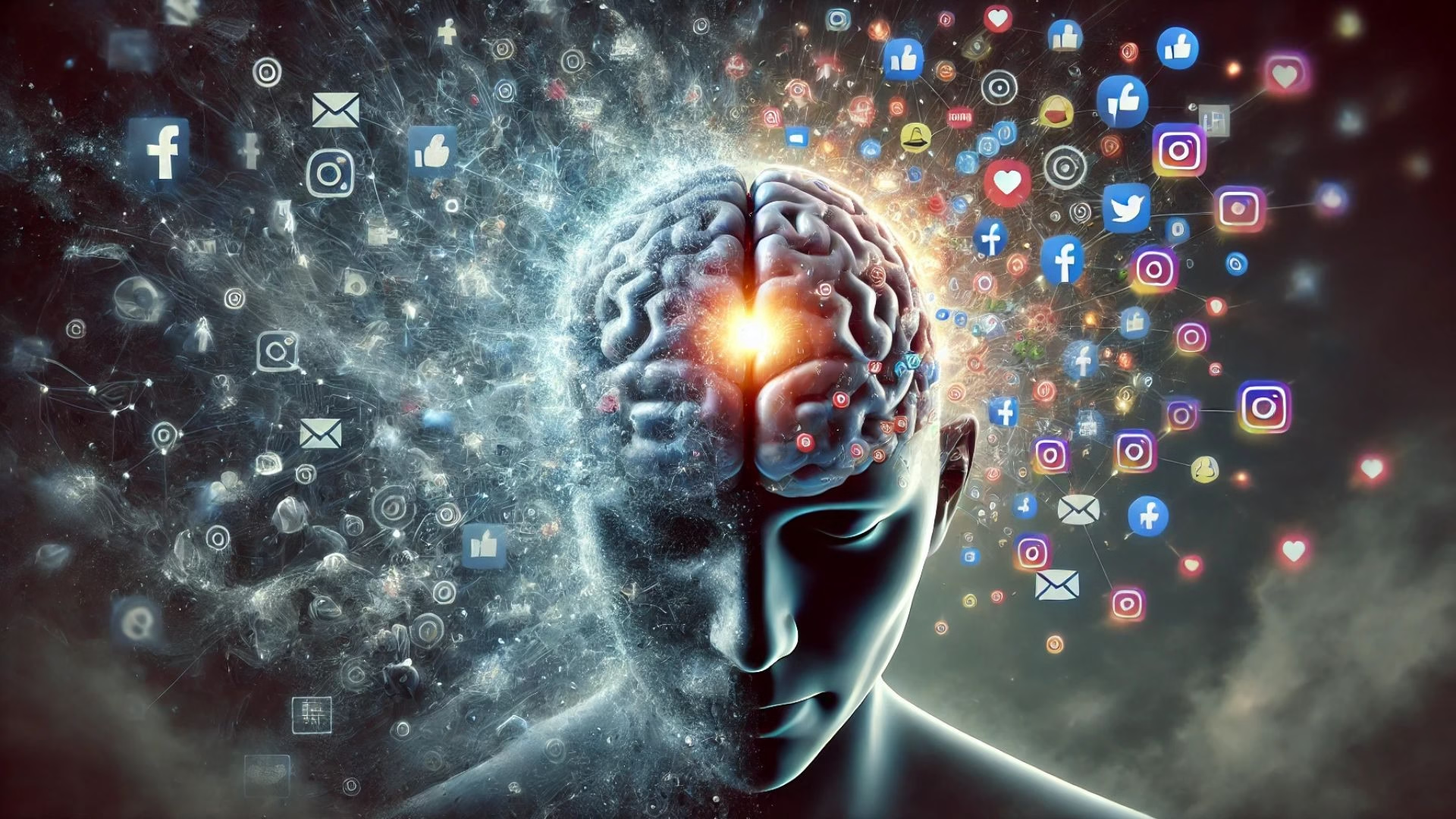

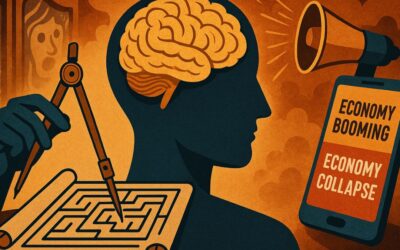


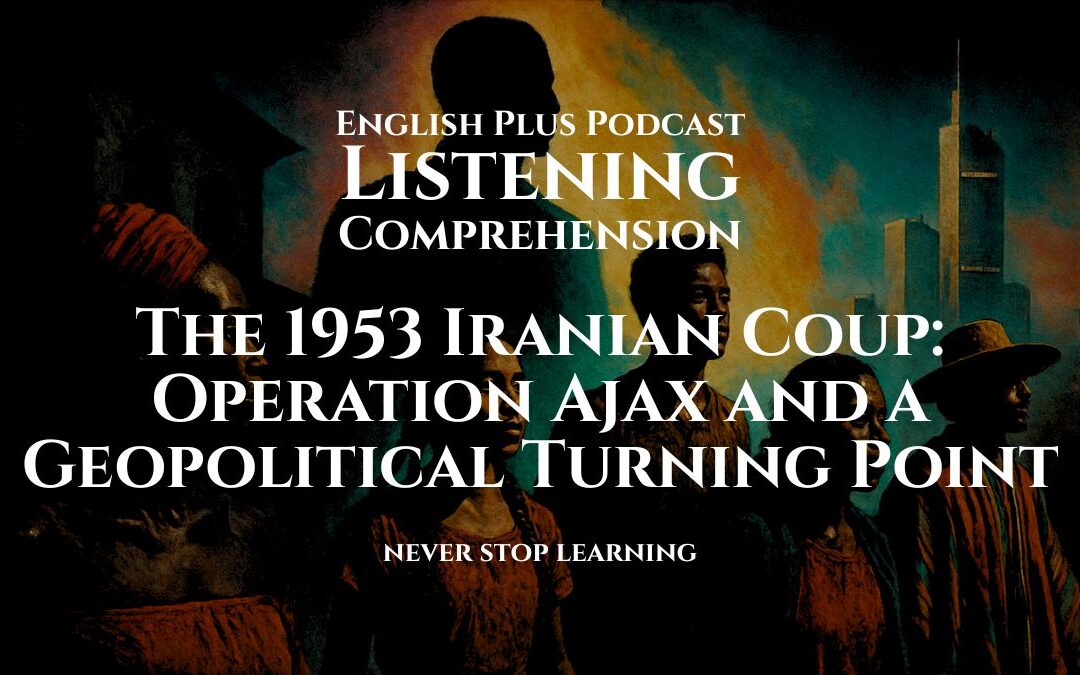
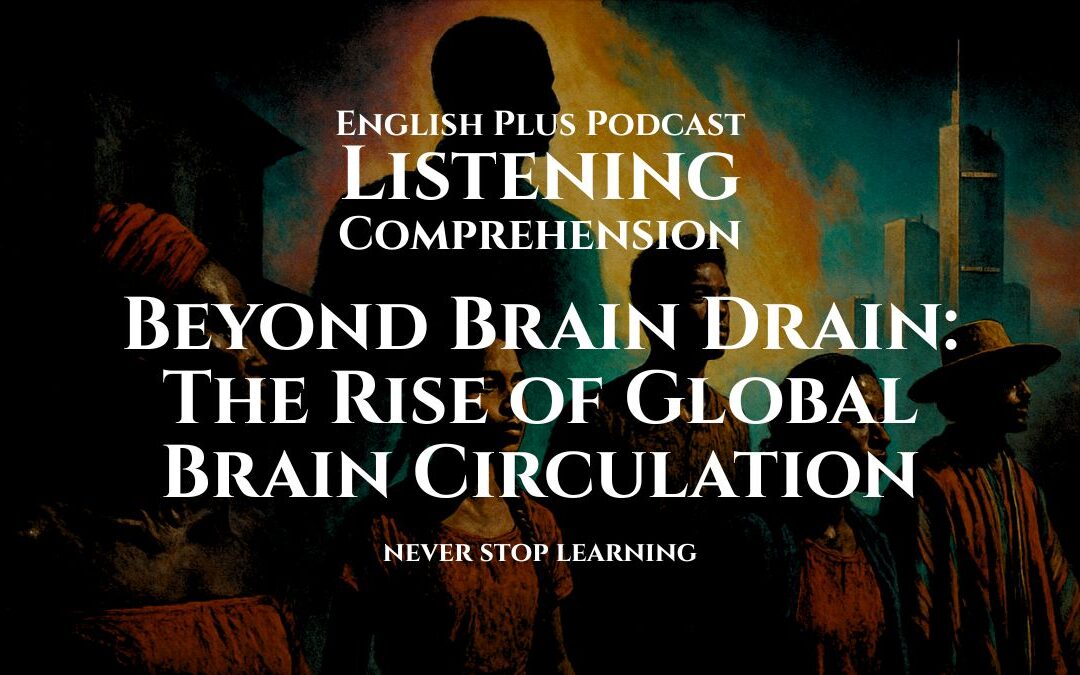
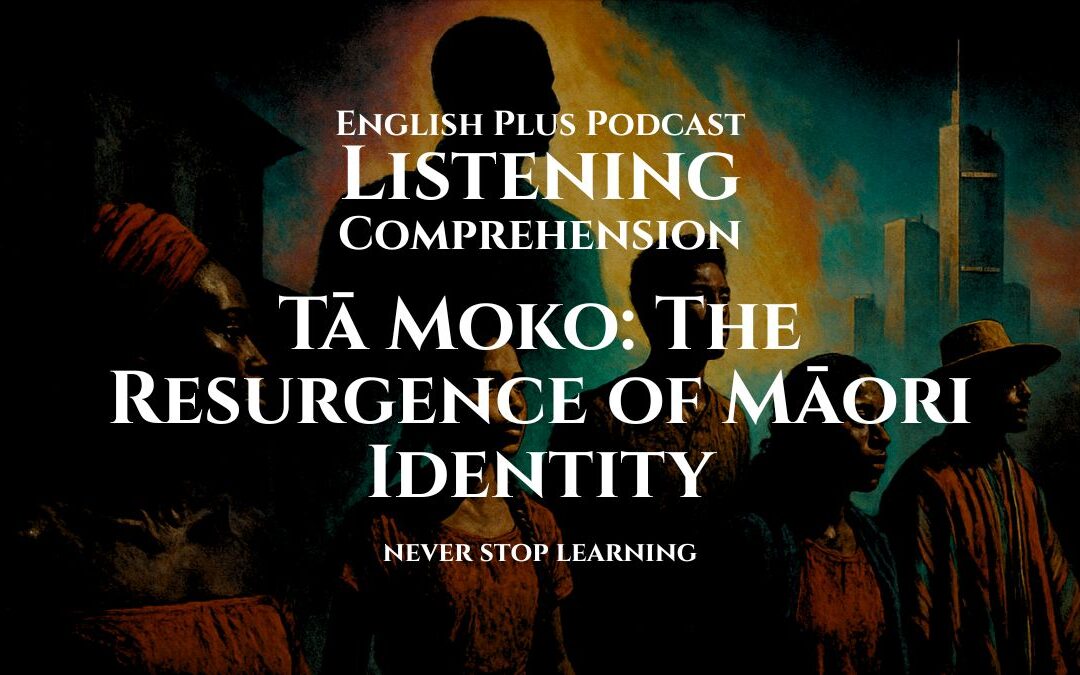
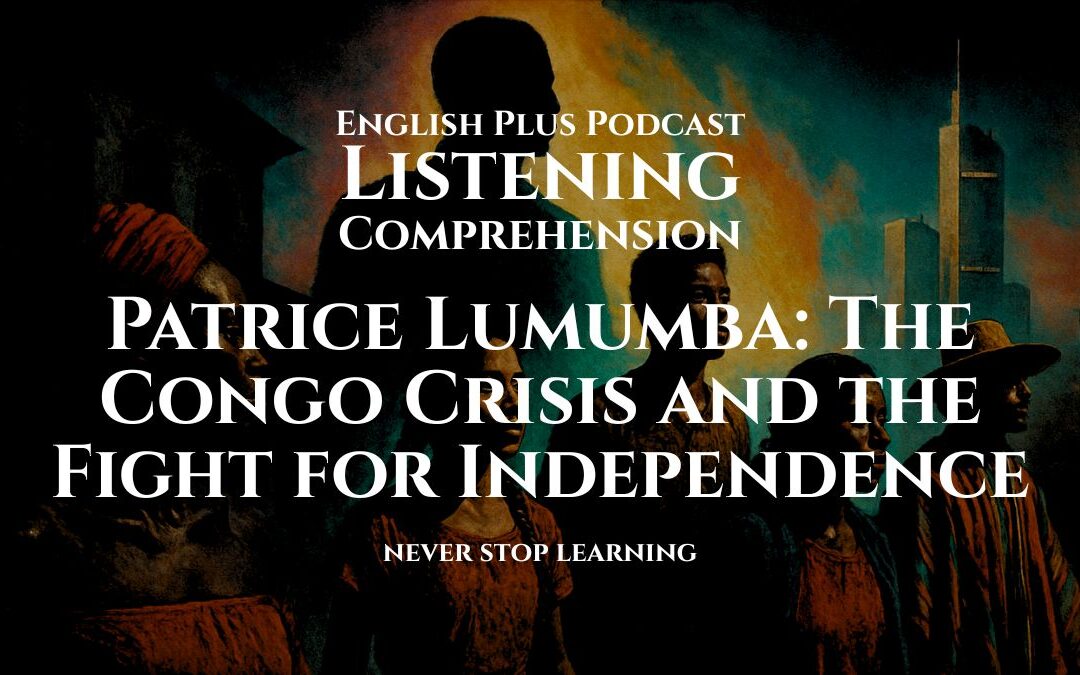

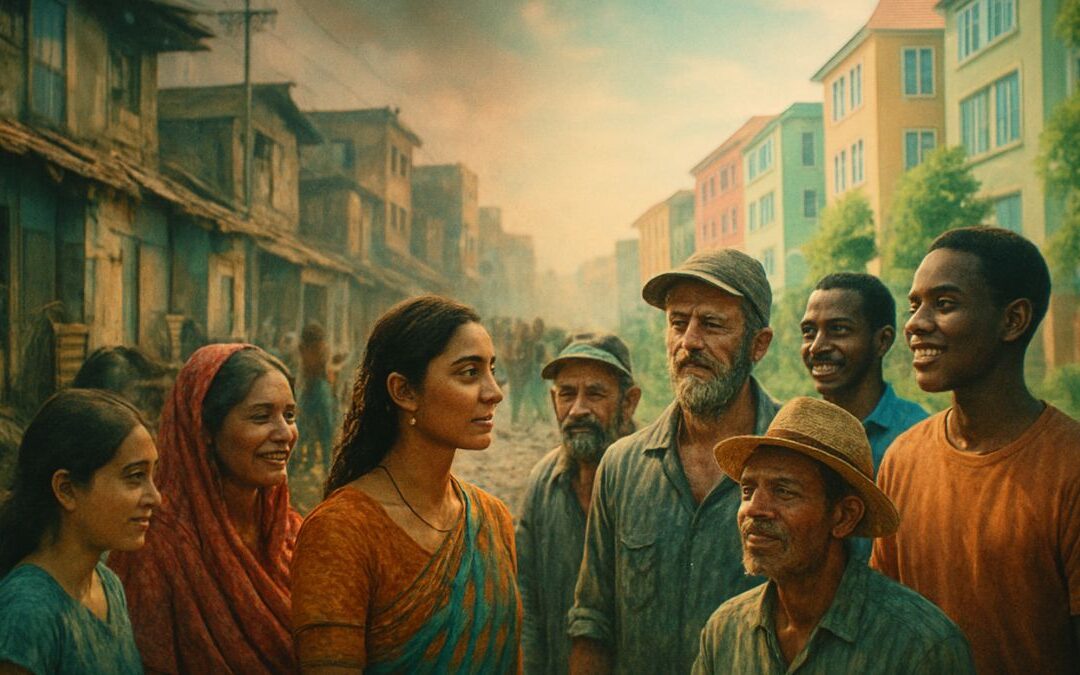
0 Comments